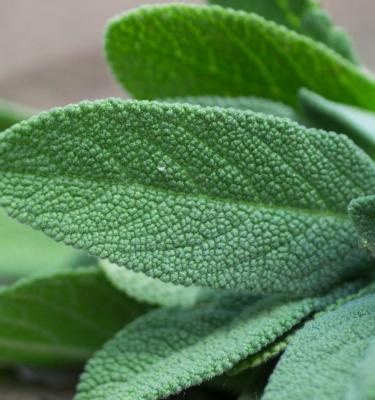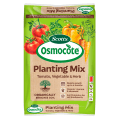

How to grow & care for sage
Sage (Salvia officinalis) is a drought tolerant, woody herb from the Mediterranean that’s loved for its delicate flavour and fragrance. Use freshly picked sage leaves to flavour poultry, pork, stuffings, egg and vegetable dishes.
Top 5 steps to growing sage
- Sage needs a full sun spot with a free draining soil.
- Sage is most easily grown from cuttings or potted plants, but seeds are available too.
- Harvest sage leaves as you need them - they can be used fresh or dried.
- Cut spent flowers off at the end of summer and prune back by a third in early spring to maintain a compact growth habit.
- Fertilise with Scotts Osmocote® Controlled Release Fertiliser: Tomato, Vegetable & Herb in spring and autumn.
Shopping List
- Sage seeds, cuttings or potted plant
- Scotts Osmocote® Compost Premium Soil Improver
- Scotts Osmocote® Controlled Release Fertiliser: Tomato, Vegetable & Herb
- If growing in pots, Scotts Osmocote® Plus Organics Tomato, Vegetable & Herb Potting Mix and a suitable pot
- If growing from cuttings, Scotts Osmocote® Seed & Cutting Mix and some small pots
- Garden trowel
- Mulch
- Defender™ Snail & Slug Pellets
Prepare
Sage is most commonly grown from potted plants or cuttings. Sage can be grown from seeds after the risk of frost has passed, but they can take 3-4 weeks to germinate - so cuttings or potted plants are a faster option.
Choose a full sun spot with free draining soil. Dig the hole twice as wide as the original nursery pot and the same depth. Mix a small amount of Scotts Osmocote® Compost Premium Soil Improver through the original soil at the base of the planting hole.
Planting in the garden
Plant sage into prepared soil by removing it from the nursery pot and placing it into the centre of the planting hole. Water it in well and mulch around the plant to retain moisture and suppress weeds.
Let the sage plant establish in its new home and put on fresh growth before you start harvesting. Sage ‘sprigs’ or leaves can be harvested using sharp scissors whenever you need them. The leaves and flowers are both edible, they can be used in cooking or as pretty garnish. The leaves can be harvested and dried for storing and using at a later date.
Growing from seeds
Sow sages seeds direct, once the risk of frost has passed. Sprinkle the seeds on the surface of the prepared soil and lightly cover with soil or potting mix - keep them moist while they germinate which should take 3-4 weeks.
Mulch around established sage plants to retain moisture and suppress weeds.
Growing from cuttings
Sage strikes easily from cuttings. Take a 10cm tip cutting from an established sage plant and remove the lower leaves. Dip the cut end into some honey or root hormone powder and plant it into a pot filled with Scotts Osmocote® Seed & Cutting Mix.
Keep the soil around your cuttings moist, but not soggy while they strike roots. After 6-8 weeks your sage cuttings should have new roots and be ready to pot up or plant into the garden.
Planting in pots
Sage can be grown in medium-sized pots with good drainage that are at least 30cm deep by the same width.
Fill the pot with Scotts Osmocote® Plus Organics Tomato, Vegetable & Herb Potting Mix, before removing the sage plant from its nursery pot and planting into the prepared pot. Backfill around the root ball and water in well.
If growing from seeds direct sow the sage seeds onto the potting mix in your chosen pot. Lightly cover with more potting mix and keep moist until they germinate in 3-4 weeks.
Add a light layer of open organic mulch to retain moisture during the warmer months.
Harvest & Maintenance
Harvest sprigs or individual sage leaves when you need them using sharp scissors. Regular harvesting will help keep the plant compact and neat. Both the leaves and flowers are edible and can be used fresh, added to cooking or used as a garnish.
Sage leaves can be dried by harvesting 10-20cm long stems of sage and hang them upside down in bunches in a dry spot. Once dried, completely, remove the leaves from the stems and store in dry, airtight containers for use throughout the year.
Sage doesn’t need a lot of fertiliser, but will benefit from a dose of Scotts Osmocote® Controlled Release Fertiliser: Tomato, Vegetable & Herb in spring and again in autumn.
Pests & Diseases
Sage is rarely attacked by pests or diseases. If slugs and snails become a problem for young seedlings use beer traps (saucers filled with beer) or sprinkle Defender™ Snail & Slug Pellets around your plants.



